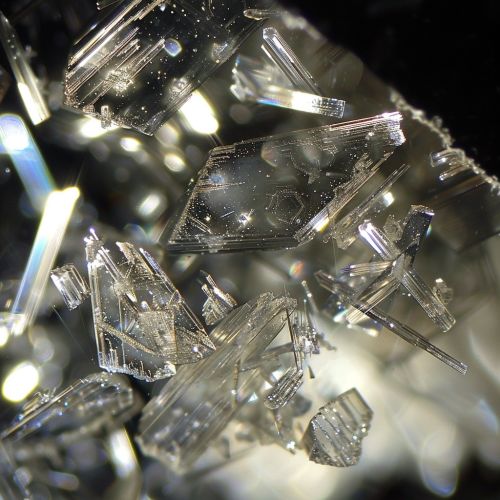Silicon dioxide
Introduction
Silicon dioxide, also known as silica, is a chemical compound that is an oxide of silicon with the chemical formula SiO2. It has been known since ancient times. Its most common form, in nature, is quartz, and it is the primary component of many types of sand and sandstone.


Physical Properties
Silicon dioxide is most commonly found in nature as quartz, which comprises more than 10% by mass of the earth's crust. Quartz is the only polymorph of silica stable at the Earth's surface. Other forms exist in extreme environments. For example, the high-strength minerals coesite and stishovite are found in meteorite craters and in the deep earth, where they are formed by high pressure.
Chemical Properties
Silicon dioxide is a highly stable compound due to the high binding energy of the Si-O bond. It is very hard, has a high melting point and a boiling point, and is a poor conductor of electricity and heat. It is insoluble in water and many organic solvents. This makes it an ideal material for many industrial applications.
Production and Uses
Silicon dioxide is most commonly produced by the reaction of silicon with oxygen. It is used in a variety of applications, including as a filler in the production of rubber, glass, ceramics, and concrete. It is also used in the production of silicon chips for electronics and in the production of solar panels.
Health Effects
Inhaling fine particles of silicon dioxide can lead to a disease known as silicosis. This is a serious lung disease that can lead to disability and death. Workers in industries where silicon dioxide is commonly inhaled are at an increased risk of developing this disease.
Environmental Impact
Silicon dioxide is a major component of sand and dust, and thus plays a significant role in air quality and the earth's climate. It is also a major component of the earth's crust and plays a significant role in the carbon cycle.
